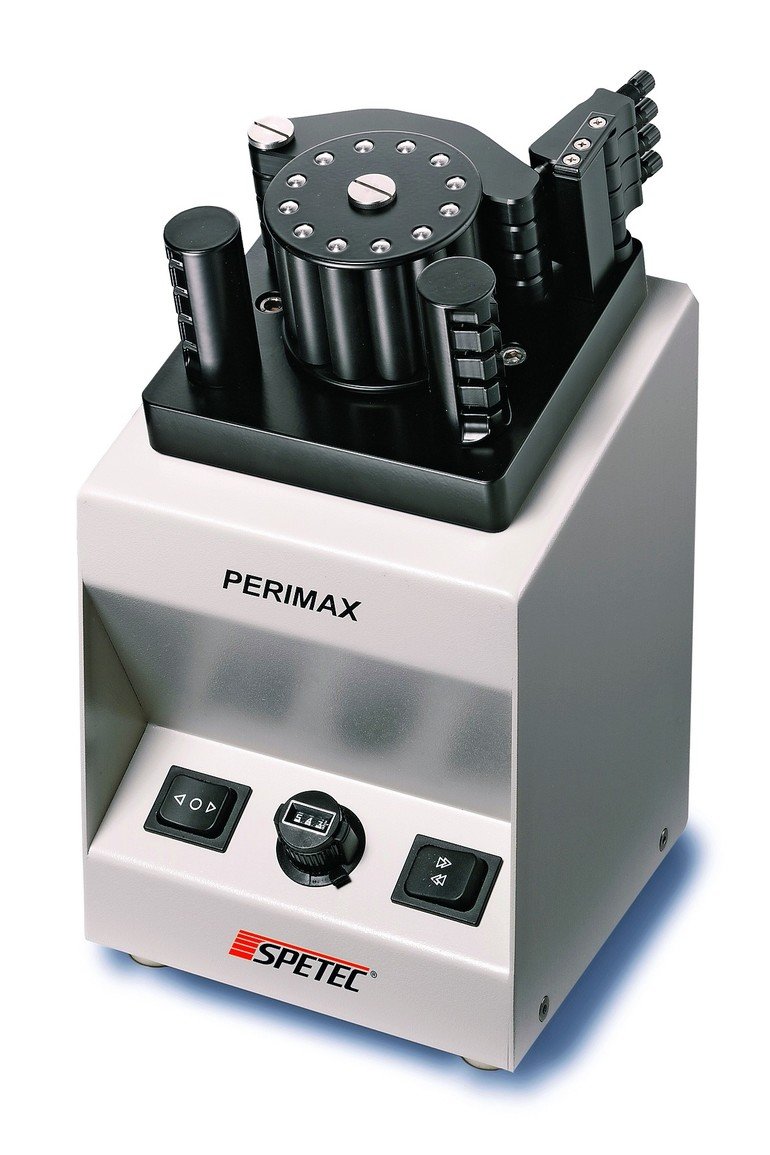Biotech processes with increasingly high concentrations of active ingredients demand particularly high precision on the part of the pump technology which is employed, coupled with low pressure and volumetric flow pulsation, a high level of resistance to many different types of fluid and the longest possible service life. Modern peristaltic pumps like those from Spetec, the German pump manufacturer, meet all these requirements and are also ideal for applications involving fermentation or cell cultures in bioreactors.
Pulsation-free metering in the microlitre range
Peristaltic pumps for biotechnology
Biotech processes with increasingly high concentrations of active ingredients demand particularly high precision on the part of the pump technology which is employed, coupled with low pressure and volumetric flow pulsation, a high level of resistance to many different types of fluid and the longest possible service life. Modern peristaltic pumps like those from Spetec, the German pump manufacturer, meet all these requirements and are also ideal for applications involving fermentation or cell cultures in bioreactors.
Perimax 12/16 laboratory pumps are available for a wide range of applications. Spetec also produces the associated tubing in many different materials. PVC, Santoprene and silicone are the most suitable options for dilute acids as well as for water-based solutions. Fluorinated rubber tubing is generally used to transport concentrated acids and the most common solvents while Solventflex is preferred for metering alcohols, petrol, diesel and kerosene.
The main aims when designing and developing a peristaltic pump are constant metering, an extremely stable technical process and, depending on the application, the lowest possible pulsation levels. These were key criteria when designing the two laboratory pump variants Perimax 12 and 16, which differ in terms of the number of rollers (12/16) in the pump head and the continuously adjustable flow rates they can achieve (0.0017 to 20 ml/min compared to 0.0034 to 40 ml/min). The 16-roller pump produces no measurable pulsation because the 16 rollers are divided into 32 units, which are phase-shifted relative to one another. As a result, dual pump tubing is required when the Perimax 16 is used. The two tubes are coupled together by means of a Y-piece and individually guided via a half-channel. Thanks to this arrangement, the peaks and troughs cancel each other out, resulting in a pulsation-free flow.
Another important characteristic of these pumps is their ease of use and maintenance. The selected tubing is guided around the pump head and its two ends are secured to a special mechanism. The compression level can be set with a screw on the adjusting lever. There are pushbuttons for switching the pump on and off and for selecting the direction of rotation (clockwise or anti-clockwise). The speed at which the pump head rotates is continuously adjustable using a 10-turn potentiometer. Another button activates the maximum speed briefly, for example to enable rapid rinsing of the tubing when changing over to a different fluid. The drive unit installed in the two pumps is identical. The constant rotation of the low-wear stepper motor and the high-precision optoelectronic controller guarantee uniform fluid transport. Owing to the rear-mounted, 9-pin sub-D connector, the speed and direction of rotation can be controlled externally by means of an analogue signal. All the pump’s external parts are made of stainless steel or PVC or are plastic-coated for a high level of corrosion resistance.
Spetec’s OEM pumps have demonstrated their worth in the field of instrumental chemical analysis, particularly with spectrometric methods such as ICP. The task of the peristaltic pump here is to ensure low-pulsation metering of the substance to be analysed into the nebuliser, which disperses the solution into the plasma as a fine mist. The individual atoms are ionised in the plasma, resulting in an atomic emission which can be recorded both qualitatively and quantitatively using spectrographic and spectrometric systems. Peristaltic pumps have also proved to be of great value in biotech, bioanalysis and column chromatography applications.
These pumps are not manufactured as standard products but are designed and built individually on request. Only a few of the basic components, such as the roller heads, pressure brackets and clamp mechanism, are identical.
www.cpp-net.com search: cpp0216spetec
Sarah Borrmann
Sarah Borrmann
Sales,Spetec
Prof. Knut Ohls
Prof. Knut Ohls
Scientific Adviser,Spetec
Share:







